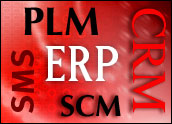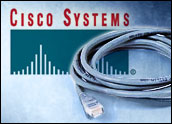
In the past, enterprises too often adopted an application strategy that consisted of blindly throwing money at software vendors to solve problems. Not surprisingly, this was an unwise use of capital.
Now, with budgets tight and ROI paramount, companies must define their business processes internally before talking to vendors, according to Scott Tiazkun, IDC research manager for enterprise applications. Otherwise, vendors may be able to convince an enterprise that the vendor’s story is the same as the enterprise’s — and that the enterprise needs what the vendor is selling.
“Enterprises need to define the best mix of applications based upon their business strategies and IT policies,” Michael Dominy, senior analyst for business applications and commerce at The Yankee Group, told the E-Commerce Times. “IT departments should always be working to align technology with business goals and objectives.”
Amid vendors’ claims and budget realities, how can an enterprise select the best portfolio of applications for its needs? In this second installment of a two-part series, the E-Commerce Times suggests five steps worth taking before taking the enterprise application plunge.
1) Develop an IT Road Map
“The best way to decide what software to keep and what software to displace is to develop a business-aligned IT road map,” Dominy said, adding that this plan “must be supported by a business case and be controlled with an overall IT governance process.”
Dr. Katherine Jones, managing director for enterprise business applications at Aberdeen Group, provided an example of how a company can put together such a road map. If a company is in the pharmaceuticals industry, she said, it needs to consider plans, labs, clinical trials and production of medication.
Then, she added, the enterprise must determine whether each core business process can be done more expeditiously with new software than without.
“If the application doesn’t fit in, it’s an irrelevancy, whatever its functionalities,” Jones told the E-Commerce Times.
2) Categorize Your Needs
In more general terms, Meta Group program director Bruce Hudson said any enterprise IT portfolio consists of applications, projects, people and data. Therefore, an enterprise needs to ask itself a key question: Where do applications fit in my portfolio, and how do I manage that portfolio?
Hudson cited three main categories of business applications used by a typical enterprise. The first type consists of programs that perform tasks like handling e-mail, managing electricity and reducing the phone bill. These programs work to run the business, and their risks and rewards are known.
Meanwhile, a second category encompasses enterprise applications that work to grow the business. Such programs carry higher risk but potentially offer a greater degree of reward. The third category includes programs that have the potential to transform the business. As Hudson put it: “‘If this works, it will be worth billions of dollars!’
“These investments [in applications] frequently change categories on their own. In other words, a program used to grow the business last year is now used to run the business this year,” he said. “Because of this, the [enterprise application] portfolio needs to be examined and rebalanced periodically. Enterprises have to plan rather than being reactive.”
Additionally, in pinpointing its business needs, an enterprise must take into account its tolerance for risk, its particular taste and its approach to management.
3) Determine the Mix
Hudson said few enterprises are “green-field” — starting from scratch with no prior IT commitments. Instead, most businesses have legacy applications or have acquired another company and therefore must contend with new applications on that front. Making disparate applications “talk” to one another is so important that the state of a company’s IT situation can affect its acquisition price.
However, Dominy said he does not recommend full-scale rip-and-replace strategies. Instead, he said, “Enterprises that have shelfware should revisit the business case for the application and use the business-case process to make a decision to begin implementing or to pull the plug and break the maintenance agreement with the vendor.”
IDC’s Tiazkun added that while a vendor may urge an enterprise to buy all of its software from one source to achieve an integrated IT infrastructure, that scenario is an idealized one.
“There are few pure SAP, Oracle or PeopleSoft houses,” he told the E-Commerce Times. Fortunately, he added, “Web services are increasingly [building] types of interfaces that can wipe out architecture and disparate application issues [and] provide a level playing field.”
According to Tiazkun, best-of-breed application providers stand to gain the most from a Web services strategy. Meanwhile, Hudson noted that the fundamental architecture of business applications is changing, making it easier to achieve inter-application communication.
4) Suite vs. Best-of-Breed
Still, an enterprise may discover that standardizing its application portfolio with large ERP vendors is the best course, despite tradeoffs in flexibility and functionality.
“Enterprises need to consider TCO (total cost of ownership), vendor viability, technology and vision as well as application functionality when deciding which application vendor to select,” Dominy said. “One enterprise we worked with in 2003 faced this issue and opted to use SAP’s supply chain planning application even though SAP’s application had less functionality than a best-of-breed vendor’s application. This particular enterprise decided that selecting SAP was a better decision because the enterprise had concerns about the best-of-breed vendor’s viability.”
The dependencies created by many different application sets can cause chaos, Hudson agreed. However, he noted, if an enterprise sets up an all-SAP infrastructure, it may discover it has locked employees into completing tasks in a particular way. This lack of flexibility can prove to be problematic.
Small best-of-breed vendors know that, to survive, they must be able to integrate as seamlessly as possible with other applications. And enterprises often find they need the greater functionalities provided by best-of-breed vendors’ products, Hudson said.
5) Prepare for Installation
Whether a company chooses a best-of-breed product or a more unified software suite, Tiazkun stressed that no enterprise application installation goes 100 percent as planned — no matter what a vendor promises. “That’s why it’s so important to take the process step-by-step,” he said.
One of the most important things an enterprise can do, besides defining its IT road map, is talk to current users of a vendor’s product to determine whether the software in question will serve its needs.
Tiazkun acknowledged that vendors only refer potential customers to companies that have had successful installations. But even taking that into consideration, an enterprise can learn a lot by talking to these “success stories.”
From users, for example, enterprises can determine the learning curve of a certain solution, how much downtime the company in question experienced, how much of the solution ended up as shelfware, whether the IT budget stayed under control, if there were unexpected costs, and a host of other issues to help them determine whether buying the solution would be a cost-effective move.
“They may also discover side benefits [of the solution] that they didn’t expect,” Tiazkun added.
















































Social Media
See all Social Media